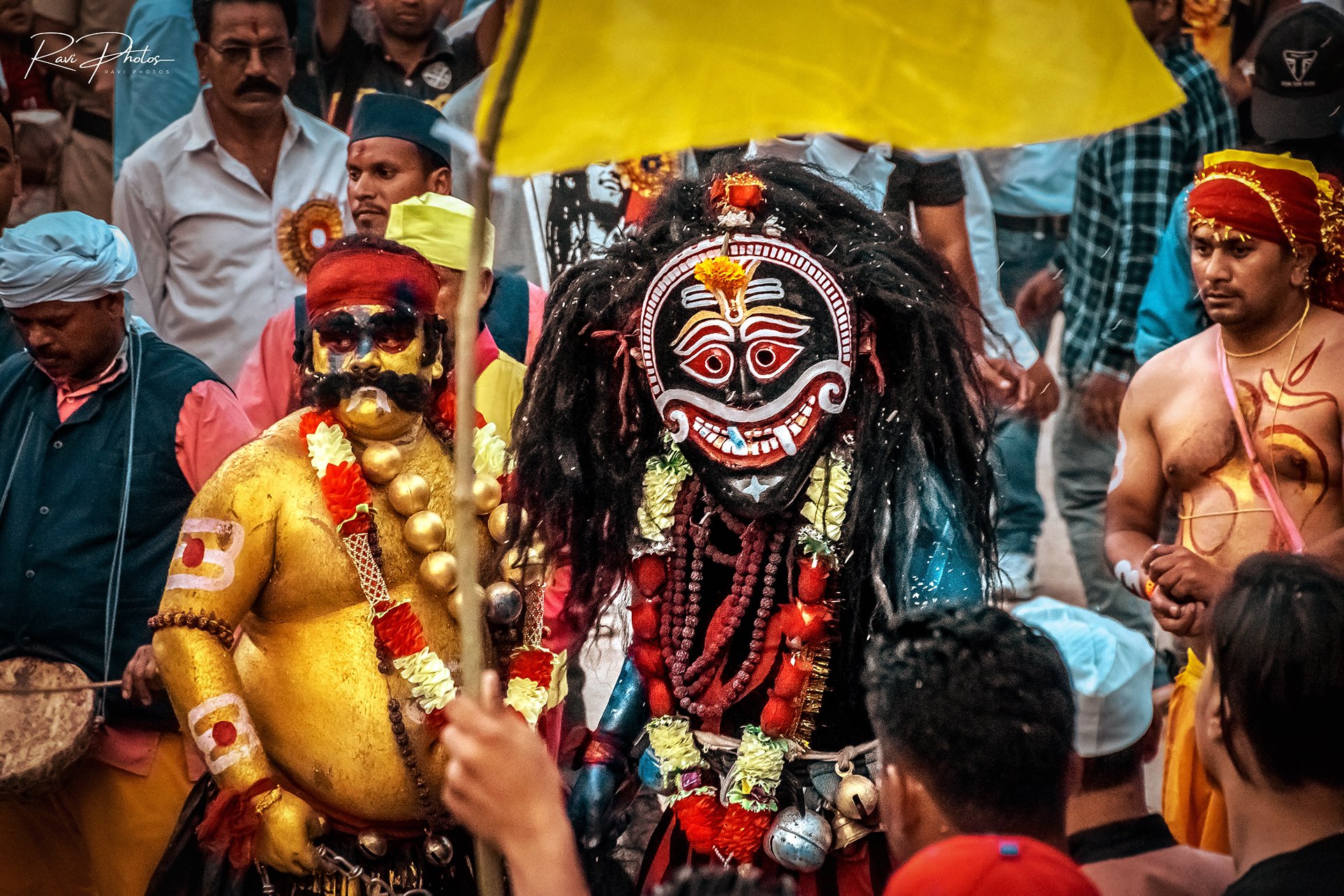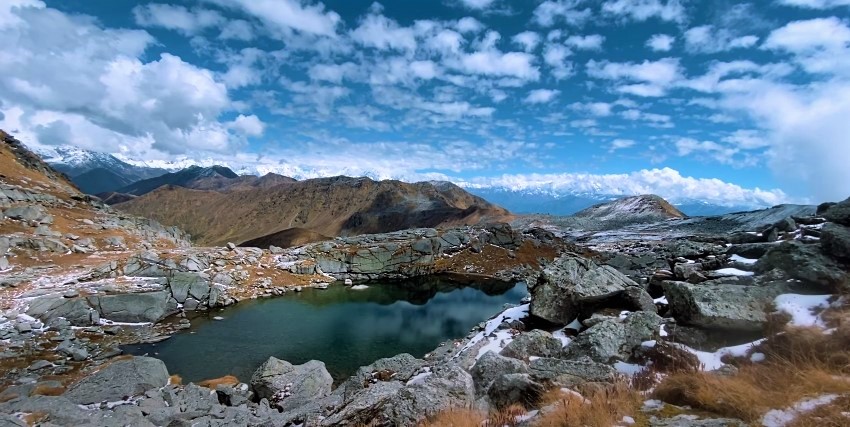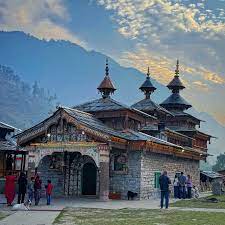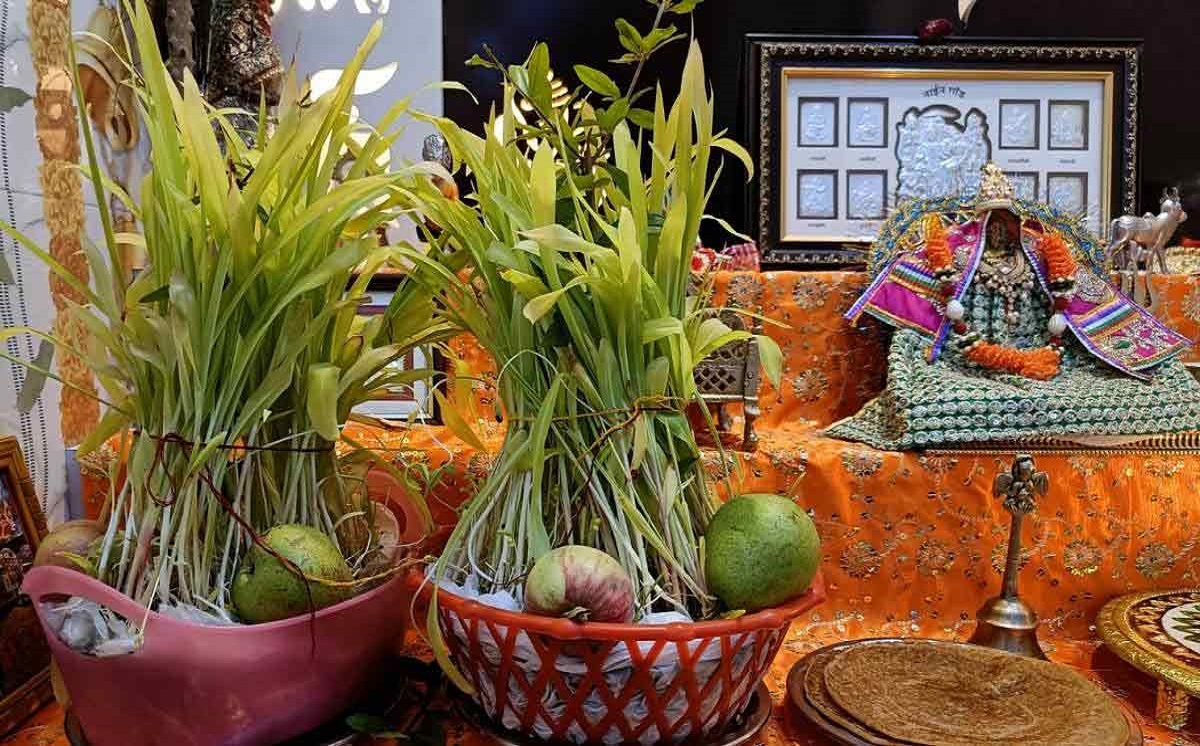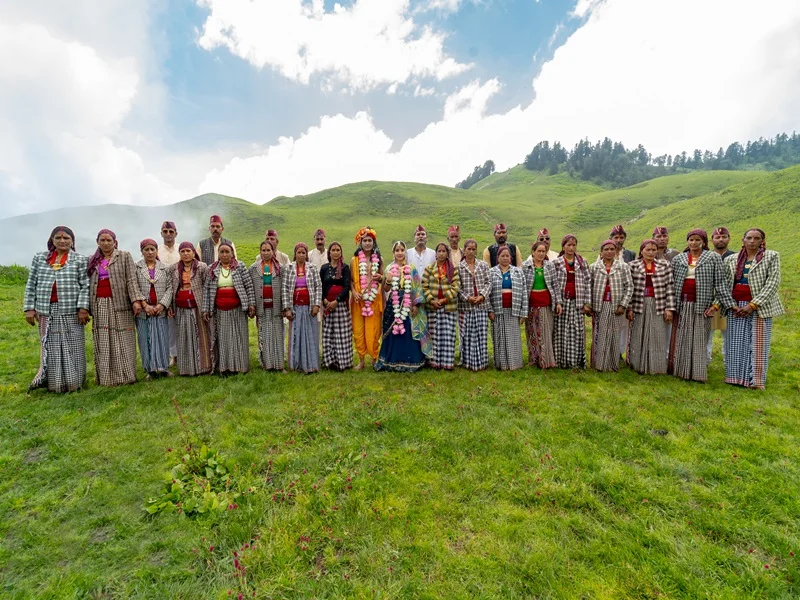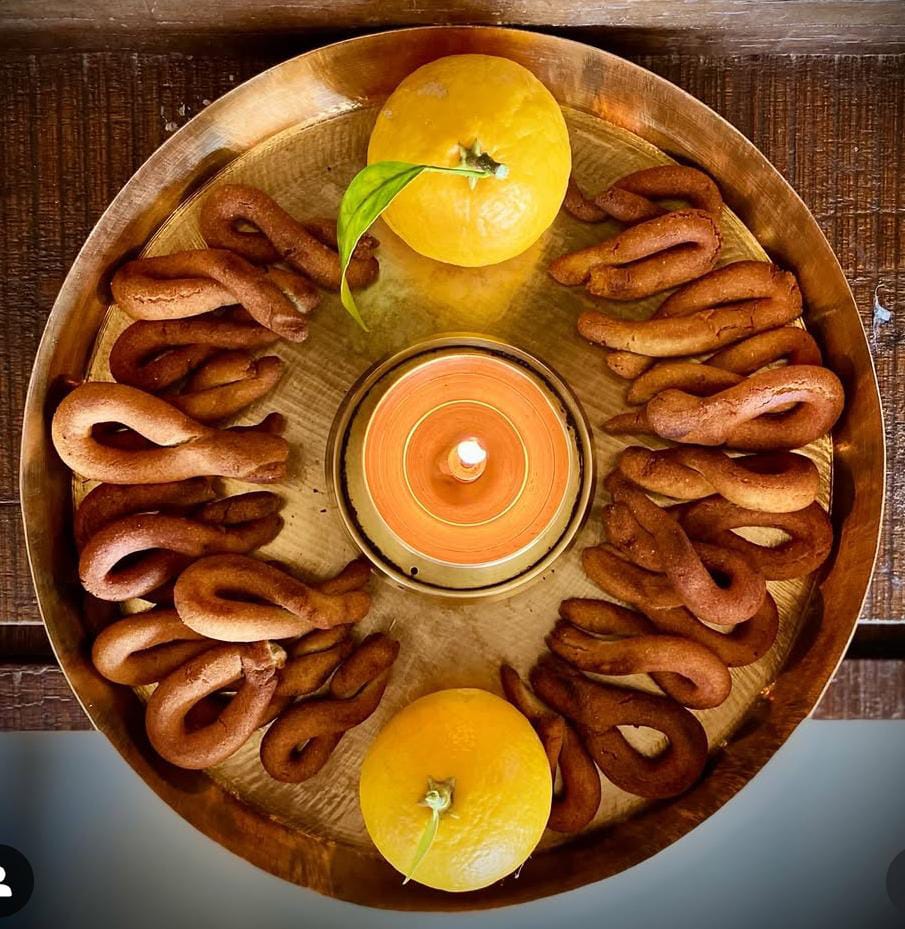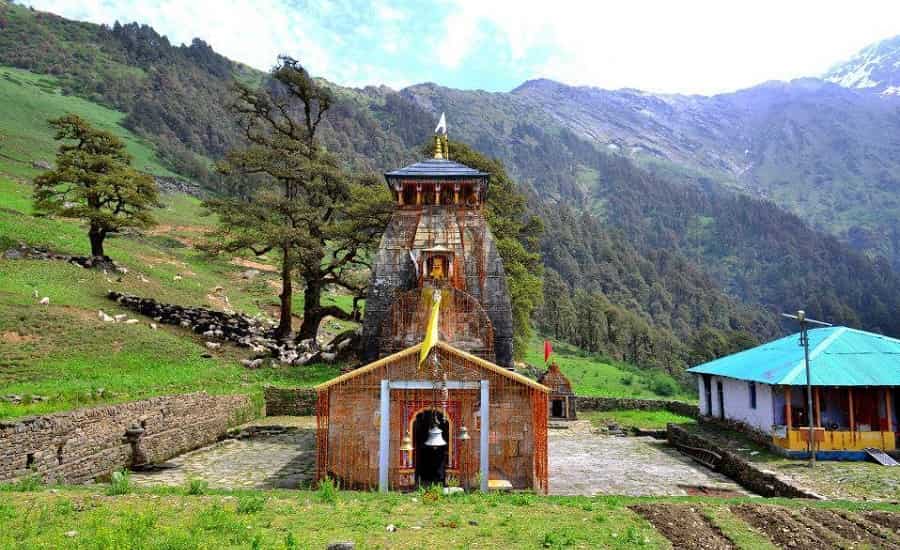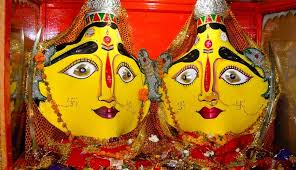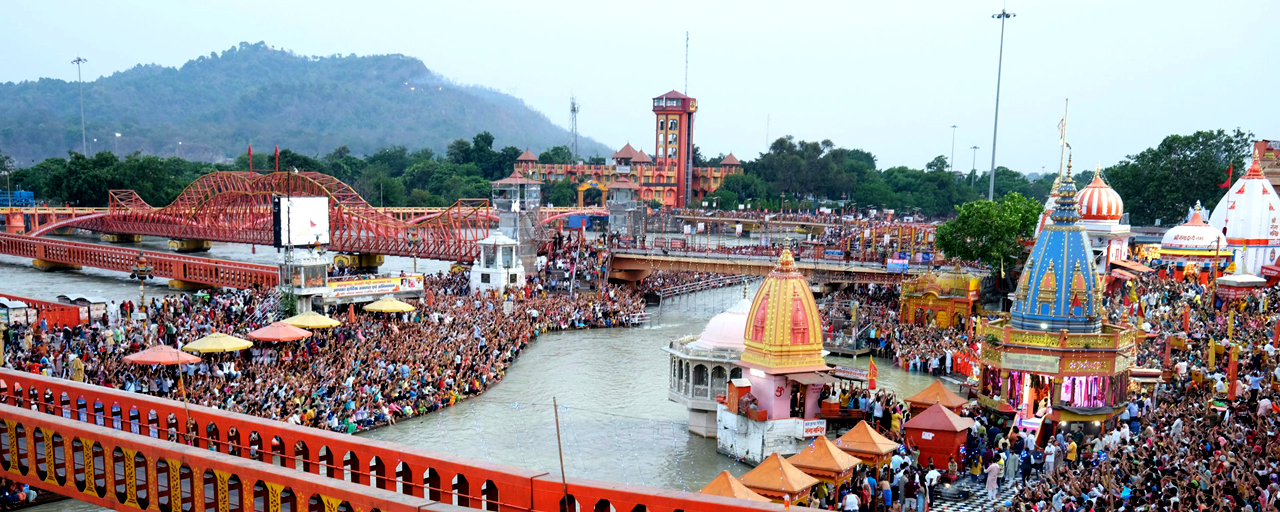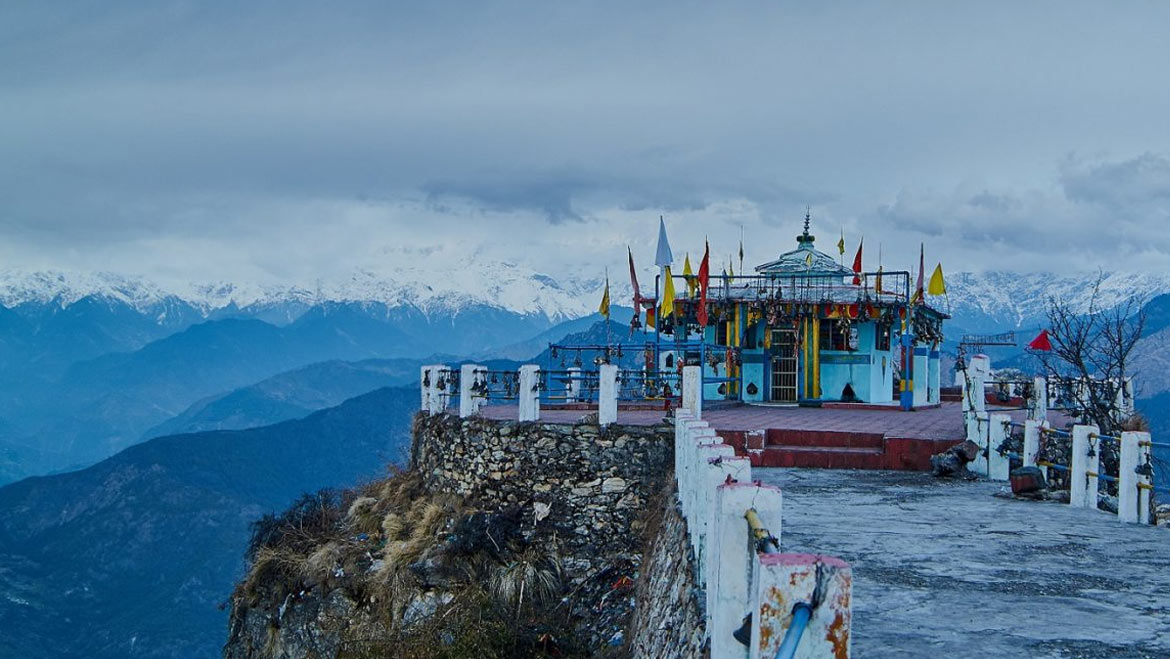In mid-Bhado (typically September), when the rains loosen their grip on the hills of Pithoragarh, something magical wakes up. Mud paths glisten, fields of paddy sway, and villages warm up for a celebration unlike any other, Hill Jatra (हिलजात्रा).
This is not a festival of polished stages or flashy lights. It is a folk theatre performed in soil, rain, masks, and communities gathering. It connects people to earth, myth, harvest, and memory. If you watch Hill Jatra, you feel that you are witnessing something alive, something essential.
Origins & Legends
They say Hill Jatra came to Kumaon from the Sorar region of West Nepal centuries ago. Villagers brought it across valleys, and the spirit settled in places like Kumor, Bajeti, Kanalichhina, and Askot.
One legend tells of the Mahar brothers, four brave men who faced a man-eating tiger, terrifying locals. When the king offered land to the one who could slay the beast, the Mahars rose. Their victory won them not only land but also a ritual of gratitude that turned into Hill Jatra.
Another tale speaks of King Kuru of the Chand dynasty going to Nepal, witnessing mask dances, buffalo sacrifice, and ancient pantomime. He returned and requested gifts: masks, a plough, animals, and the spirit of Hill Jatra. That’s how the festival took root here.
What Happens During Hill Jatra
Hill Jatra unfolds in three parts, each bringing its own flavour and energy:
1. Ritual & Sacrifice
Villagers gather early. A goat is offered in sacrifice, with proper puja. Deities like Lakhia Bhoot are honoured. A white-clothed deer is worshipped as a regional god. The soil is wet underfoot, the prayers drift upward, and there is a hush of reverence.
2. Drama & Masks
After rituals come performance, characters enter the field in masks. Some wear deer masks (हिरन-चित्तल), others are bullocks, or represent ploughing, planting (पालतू बैल, हलवाहा), or even women planting rice (पुतारिया).
Each character acts out scenes borrowed from daily life jotai of fields, transplanting paddy, watering saplings, playful mock fights. Sometimes men dress up as women for certain roles. All of it is community theatre spread over mud and grass.
3. Songs, Dance, Nightlong Celebration
As evening creeps in, the ground fills with music. Drums beat (ढोल, नगाड़े), folk songs in Kumaoni ring out, dancers move in circles, sometimes barefoot in mud, sometimes under the open sky. The masked figures move among them, the Lakhia Bhoot shows up in his fierce mask, people clap, sing, maybe laugh, maybe pray.
Night becomes a tapestry of firelight from lamps or torches, voices rising, rhythms pulsating. It is here that Hill Jatra becomes more than a ritual. It becomes communion with land, ancestors, and nature.
Characters You Might Meet
Here are some of the mask-roles or characters you will almost always see:
- घोड़िया चौकीदार – horse-guard, announcing the beginning
- झाड़ूवाला – sweeping, cleaning, symbol of preparation
- हिरन-चित्तल – deer, playful and graceful
- हलवाहा – the laborer who ploughs soil, symbolic of toil
- पुतारिया – women planting saplings, bringing in life
- नेपाली बैल & स्थानीय बैल – the bullocks, bones of agrarian life
- लखिया भूत – the masked spirit, feared, revered, wild, with ties to Shiva’s attendants
Each mask, each role has meaning. Even the mud that covers feet, the bells that ring at the necks of masked bullocks, the rhythmic hoot of horns they are all part of telling the ancient story.
Why Hill Jatra Matters
You may ask why such festivals survive when life is changing fast. The answer lies in what they carry:
- Cultural Identity: For people of Kumaon / Pithoragarh, Hill Jatra is a memory. It is their myth, their ancestors’ bravery, their soil’s voice.
- Agricultural Connection: It aligns with the rainy, planting season. It honours the land and those who work it.
- Social Bonding: Villagers gather, roles get passed down generations, masks get handed over, and songs get taught. Elders and children meet.
- Preserving Folk Art: Mask making, costume, dialect songs. Without these, much gets lost.
Spiritual Element: Even as the festival feels joyful and earthy, there is a strong undercurrent of faith in seeking protection, blessings, and prosperity. Lakhia Bhoot is not just a character, he’s a symbol.
When & Where
Hill Jatra is mostly celebrated in Kumor village in the Soor valley, Pithoragarh. Also in nearby Bajeti, Kanalichhina, Askot, etc.
It usually takes place in the month of Bhado, just after or during the monsoon’s retreat. The earth is soft, life is green, and air is thick with possibility.
The festival is tied to calendar events like Gaura Maheshwar vidai. Many villages schedule it around days when harvesting labor is free, allowing people to fully participate.
How It Feels If You Attend
I remember once watching Hill Jatra in Kumor. The sky was heavy with clouds, the air cool, and the scent of wet earth everywhere. The first light of dawn reveals masked figures waiting behind trees.
Goats bleat in ritual corners. Women in colourful पोशाक (dress) gather saplings. Children run past, their laughter muddying with rain droplets. The bullocks with bells around their necks move slowly and firmly.
Then the drums start. First a thump, then many. Masks emerge. Lakhia Bhoot appears. There is fear, awe, joy. Music rises. People clap and sing. By night, the mud is pressed into shoes, the robes stained, but hearts full.
You leave smelling of smoke, hearing folk songs, carrying the echo of a mask’s voice in your mind.
Tips If You Want to Witness Hill Jatra
Visit Kumor village during Bhado after the monsoon, check with locals for exact dates.
- Wear comfortable shoes or sandals that can handle mud.
- Carry a shawl or rain cover. Monsoon residue lingers.
- Bring something you can offer, flowers, rice, or whatever local tradition calls for. Respect the masks and performers.
- Stay late. The night part is where Hill Jatra unfolds fully.
Preserving a Living Tradition
Hill Jatra is not just a performance. It is alive because people keep it alive. But modern life challenges it, migration, youth leaving villages, and changing values.
Some young people no longer want to wear masks. Others forget the old songs. Yet in many homes, elders still teach them. The craft of mask-making is passed down. Costumes are saved. Villagers pool money to arrange the puran rituals, the drums, the feasts.
If Hill Jatra fades, something dear is lost not only the mask and the song but a sense of belonging, a sense of earth, a sense of community.
Closing Thought
Hill Jatra is a celebration of mud, masks, music, and myth, all woven together. It is a festival of soil and sky, of laughter and reverence. It reminds us that in every beat of the drum, every mask’s expression, there is a story, there is heritage, there is hope.
If you ever find yourself in Kumaon in Bhado, try to reach Kumor or the Soor valleys. Let the masks greet you. Let the songs and dances show you what it means to belong to land, to memory, to people.
Because watching Hill Jatra is more than seeing a show, it is entering a living tradition. Let it fill something in you with mud, laughter, and faith.

